
Arbeitsgruppe Ökologie benthischer Organismen - Aktuelle Projekte
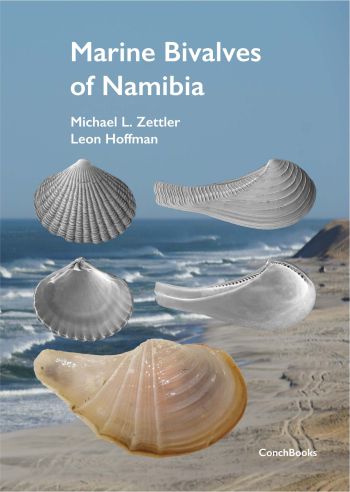
Marine Bivalves of Namibia
Duration: 2004 - 2025
This book deals with the Bivalvia of Namibia. Historically, Mollusca of the Namibian coastline have not been systematically studied and when compared to the neighbouring South Africa and Angola, relatively few species are known. The waters of Namibia are one of the deepest gaps of knowledge in World faunistic records. The present book brings together for the first time all previous knowledge from this region with results of extensive recent research. The marine bivalve fauna of Namibia has been illustrated and described using samples mainly colected by German reasearch cruises. The bivalve inventory includes a significant number of recently described species. This book will be particularly useful for hobby biologists, students and marine scientists who study offshore fauna of western Africa and that of Namibia particular.
This handbook is published by ConchBooks in May 2025.
Zettler, M.L., Hoffman, L. 2025: Marine Bivalves of Namibia. ConchBooks, Harxheim, 358 pp https://www.conchbooks.de/?t=53&u=68307
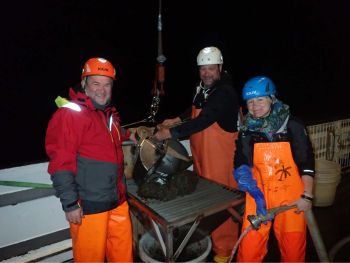
MAPUCHE - Impact of pelagic Anoxia in the Upwelling Area off Concepción and in a pristine anoxic Fjord, and the postglacial Development of the Patagonian Fjord Region of Chile
Macrozoobenthic communities along the transect off Concepción Bay
Duration: 2023 - 2026
Oxygen-deficient areas in oceans are a global problem. The reasons for this are manifold (Vaquer-Sunyer & Duarte 2008). Persistent low oxygen concentrations result in so-called oxygen minimum zones (OMZ) where bottom-water oxygen concentrations on the seafloor are per definition permanently below 0.5 ml l-1. Anoxic conditions like in the waters off Concepcion Bay normally reaching lethal concentrations for most eukaryotes (Schulz et al. 1996, Vaquer-Sunyer & Duarte 2008). Because of the high biomass of Thioploca populations, they may play an important role in controlling the biogeochemistry of sediments in the oxygen minimum zone off Chile and Peru (Jorgensen & Gallardo 1999), the development of toxic hydrogen sulphide is hampered. In the sea floor off Concepción, the Thioploca spp. transport large amounts of nitrate stored in the vacuole from the bottom water into the sediment, thereby increasing the total nitrate pool of the sediment by up to 100-fold (Thamdrup & Canfield 1996). Especially in the summer the oxygen concentration in the investigation area reach near zero (Schulz et al. 1996).
The core areas of OMZs have been subject to studies concerning ecological consequences of permanent low oxygen (e.g. Diaz & Rosenberg 2008, Stramma et al. 2012). For Namibia there have been some investigations focusing on benthic macrofaunal diversity, community structure and adaptation mechanisms in the OMZ (e.g. Zettler et al. 2009, Zettler & Pollehne 2013, Zettler et al. 2013, Eisenbarth & Zettler 2016, Amorim et al. 2021, 2022, Amorim & Zettler 2023). In the OMZ of Chilean waters, especially off Concepción and therefor in our investigation area, investigations were done by e.g. Gallardo et al. (2004), Palma et al. (2005) and Thiel et al. (2007). These and other studies concluded that organisms that survive both normal oxygen supply and potentially long periods of hypoxia, e.g. from upwelling events, can benefit from an abundant food supply and build up high densities and biomass. Dominant macrofaunal species of OMZ boundaries have been studied rather selectively. The main aim of our subgroup was to analyse the macrobenthic diversity in the core area of the central Chilean OMZ and later to compare with results obtained from the Namibian OMZ.
Förderung durch: DFG und IOW
Ansprechpartner: Prof. Heide Schulz-Vogt; Dr. Michael L. Zettler (Benthos part)
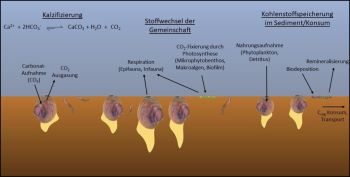
ArKoBi - Untersuchungen zum Beitrag von Arctica islandica zur Kohlenstoffspeicherung und Biodiversität in der Ostsee
Duration: 01.10.2023 - 30.09.2026
Das Projekt ArKoBi untersucht inwieweit die Islandmuschel Arctica islandica bzw. ihre assoziierten Biotope eine Rolle als Kohlenstoffsenke (d.h., Blue Carbon) spielen und wie sich der Klimawandel und anthropogene Nutzungen auf deren Biodiversität, Reproduktion und Populationsstruktur und der damit verbundenen Kohlenstoffspeicherkapazität auswirken. Dies hat nicht nur Relevanz hinsichtlich des Arten- und Biotopschutzes, sondern soll auch für den bundespolitischen Zielen zur Erhaltung der Biodiversität und zum Klimaschutz beitragen. ArKoBi bearbeitet drei Schwerpunktthemen: 1) Die ökologischen Funktion von A. islandica und ihren assoziierten Gemeinschaften als Kohlenstoffsenke oder möglicherweise auch Kohlenstoffquelle auf Organismen- und Gemeinschaftsebene, 2) Die Populations- und Reproduktionsdynamik von A. islandica in der Ostsee, insbesondere im Naturschutzgebiet (NSG) „Fehmarnbelt“, deren Entwicklung mit zunehmenden Umweltveränderungen und anthropogenen Nutzungen sowie die Konsequenzen auf die Kohlenstoffspeicherkapazität der Habitate, 3) Die Frage ob A. islandica aus Nord- und Ostsee genetisch unterschiedliche Populationen darstellen und die Ostseepopulation sich selbstständig reproduziert. Das Projekt ArKoBi vereint Grundlagenforschung mit Meeresnaturschutz und ermittelt das Potenzial zu einem weiteren Blue Carbon – Ökosystem in der Ostsee. Die Erkenntnisse können dazu dienen, mögliche Schutzmaßnahmen abzuleiten, um die A. islandica-assoziierten Biotope sowohl für den Klima- als auch für den Biodiversitäts- und Biotopschutz zu erhalten.
Förderung durch: Bundesamt für Naturschutz
Ansprechpartner: Dr. Michael L. Zettler
Projekt-Koordinator: Dr. Fabian Wolf
STATUS
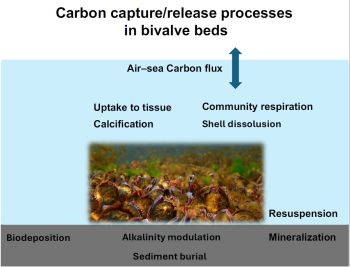
STATUS der Funktionen biogener Riffe in der Ostsee mit Schwerpunkt auf die Kohlenstoff-Fixierung
Duration: 01.10.2024 - 30.09.2027
Das STATUS-Projekt widmet sich dem Verständnis und der Quantifizierung des Kohlenstoffspeicherpotenzials biogener Riffe, insbesondere von Muschelbänken, in der Ostsee. Geleitet von der AG "Ökologie benthischer Organismen" am Leibniz-Institut für Ostseeforschung Warnemünde (IOW) und gefördert durch das Bundesamt für Naturschutz (BfN), arbeitet das Projekt eng mit dem ArKoBi-Projekt (welches den Beitrag von Arctica islandica zur Kohlenstoffspeicherung und Biodiversität in der Ostsee untersucht) sowie dem DEFINE II-Projekt des Alfred-Wegener-Instituts (Bremerhaven), das ähnliche Ansätze in der Nordsee verfolgt, zusammen.
Das STATUS-Projekt folgt einem mehrphasigen Arbeitsablauf. Nach dem Start am 1. Oktober 2024 konzentriert sich das erste Jahr auf die grundlegende Erfassung der Prozesse zur Kohlenstoffaufnahme, -speicherung und -freisetzung in Mytilus-Bänken/Riffen. Diese Phase umfasst eine umfassende Zusammenstellung vorhandener Daten zur Verbreitung und Biomasse der Muschelbänke sowie eine Lückenanalyse zur Planung der anschließenden Feld- und Laborforschung.
In den folgenden Phasen werden gezielte Feld- und Labor-Mesokosmenexperimente durchgeführt, um spezifische Kohlenstoffflüsse zu messen, darunter Biodeposition, Kohlenstoffspeicherung im Sediment und Kalzifikation. Durch Benthos-Flussmessungen und Sedimentkernanalysen soll eine umfassende Kohlenstoffbilanz für Muschelbetten erstellt werden. Die gewonnenen Experimentaldaten dienen der Entwicklung prädiktiver Modelle, die simulieren, wie Muschelbett-Ökosysteme auf unterschiedliche Umweltbedingungen reagieren und welche Rolle sie in der Klimawandel-Minderung spielen könnten.
Das STATUS-Projekt zielt darauf ab, politische Entscheidungsträger und Meeresmanager mit umsetzbaren Erkenntnissen zu unterstützen und das Potenzial von Muschelbetten als naturbasierte Lösung zur Kohlenstoffspeicherung aufzuzeigen. Durch die Förderung von Blue-Carbon-Strategien trägt das Projekt zur Entwicklung nachhaltiger Bewirtschaftungspraktiken bei, die die Biodiversität und ökologische Resilienz in der Ostsee stärken. Mit diesen Bemühungen strebt STATUS an, den Schutz von Muschelbänke in umfassendere Initiativen zum Meeresschutz und zur Klimawandel-Minderung zu integrieren.
Förderung durch: Bundesamt für Naturschutz
Ansprechpartner: Dr. Michael L. Zettler
Projekt-Koordinator: Dr. Jahangir Vajedsamiei
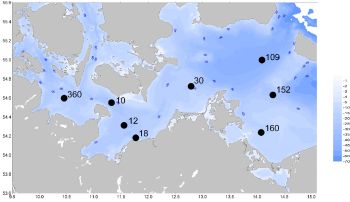
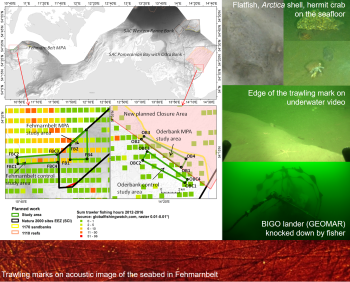
Potential effects of closure for bottom fishing in the marine protected areas (MPAs) of the Baltic Sea - WP3: Makrozoobenthos
Duration: 1.3.2020 – 30.11.2025
MGF-Ostsee is a pilot project of the “Deutsche Allianz Meeresforschung” (DAM), consisting of a consortium of seven research institutes (IOW, University of Rostock, University of Cologne, Thünen Institute, GEOMAR, DZMB, GFZ). It aims to carry out a comprehensive study of benthic communities and sediment functions in habitats affected by mobile bottom trawl fisheries (MGF) in Marine Protected Areas (MPA) of the German EEZ of the Baltic Sea and quantify the potential changes in these areas after MGF has been excluded. By comparison with reference areas outside the MPAs and in combination with experimental studies, an assessment of the influence of MGF on benthic and demersal biocenoses and ecosystem functions in the Baltic Sea shall be established. Combined investigations of sedimentological, micro- and macrobiological and biogeochemical parameters are planned inside and in the reference areas outside of the three MPAs: “Fehmarnbelt”, “Oderbank” and “Westliche Rönnebank”.
Macrozoobenthos has ecological importance in the food web, is one of the main mediators for biogeochemical processes (metabolism) in the sediment, bioturbation activity, resuspension and deposition, it has regulating properties for microorganisms and is often an important component of the bentho-pelagic coupling in coastal waters. In addition to the target species of mobile bottom-contact fishing, macrobenthic organisms are those that are directly and visibly damaged. Tolerance to fishing pressure and dynamics of (re-)colonization after its exclusion are strongly influenced by the taxonomic composition and habitat properties (especially substrate). WP3 aims to detect short and medium-term effects as well as the regeneration times of macrobenthic communities with a special focus on functional aspects, bioturbation and key long-lived species population dynamic (Arctica islandica).
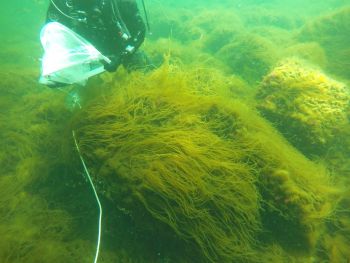
It is part of a successive series of projects funded by the German Federal Agency for Nature Conservation (BfN) with the goal to establish a sound scientific basis for the implication of relevant European Marine Directives with regard to benthic habitats. Within the project, we will continue our investigations on the spatial-temporal variability of the benthic communities in offhsore areas with a focus on special habitats such as boulder fields and exposed coarse substrates. Our work includes the mapping of benthic habitats on different spatial scales as well as the establishment of new monitoring programmes. We also will apply our findings on common assessment indicators and suggest alternative indicators if required. The analysis will be done in close cooperation with national and regional expert groups and consequently will be integrated into the national and regional discussion on the implementation of European Marine Strategy Framework Directive and the Habitats Directive.